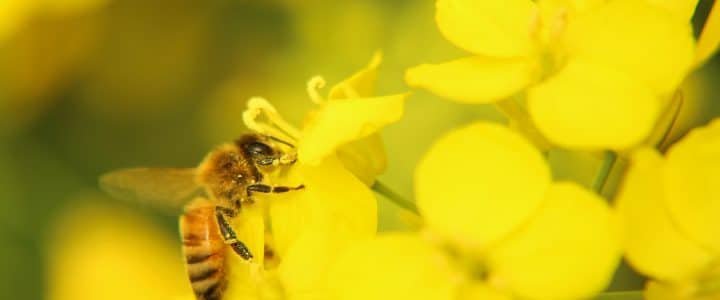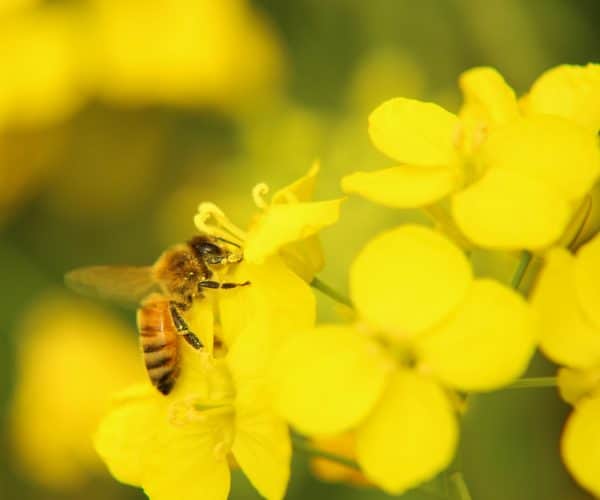The Canadian Prairies have always been an important source for biodiversity, and the canola crop contributes significantly to maintaining biodiversity on the Prairie landscape.
Providing habitats for diverse insects
Canola fields provide a habitat for an incredible diversity of beneficial insects such as bees 1, butterflies, spiders, wasps and beetles.
These diverse insect groups help increase crop yields and provide a natural check on insect pest populations.
Canola farmers use a wide range of tools, such as crop rotations, detailed field scouting and following insect thresholds, to protect these valuable allies.
An ideal home for honey bees
Canola is an ideal food source for honey bees, which can have a positive impact on canola production.
Canola farmers work closely with beekeepers to protect bees and maintain the mutually beneficial relationship between plant and pollinator.
As more acres of Canadian farmland have been seeded with canola over the decades, the number of bees has increased steadily:
Bees and canola acres 2024
Source: Statistics Canada. Table 32-10-0353-01 – Production and value of honey and Table 32-10-0359-01 – Estimated areas, yield, production, average farm price and total farm value of principal field crops, in metric and imperial units.
As canola production in Canada grew to all-time highs, the number of honey bee colonies in Canada also reached near-record levels.
Where we’re headed
2025 target:
Protect biodiversity
Safeguard over 2,000 species of beneficial insects that call canola fields and surrounding habitat home
By 2025, canola farms will help safeguard more than 2,000 species of beneficial insects that call canola fields and their surrounding habitat home. 2
The Canola Council will achieve this target by increasing pest surveillance; refining insect thresholds for pesticide application; conducting research on integrated pest management; and quantifying the economic benefit of natural habitat to canola productivity.
Quick Links
Footnotes
- Galpern, P., Manson, J., Melathopoulos, A., Kohler, M., Vickruck, J., and Robinson, S. 2020. Surveillance networks for beneficial insects: can natural habitats serve as insect reservoirs, and do they contribute to canola yield?[↩]
- Giberson, D.J. and Cárcamo, H.A. (eds). 2014. Arthropods of Canadian Grasslands. Volume 4: Biodiversity and Systematics. Part II. Biological Survey of Canada.[↩]



